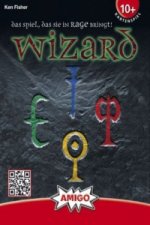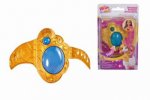
Kód: 05191418
Brand Management in the Age of Digitalization
Autor Eva Niesing
Studienarbeit aus dem Jahr 2014 im Fachbereich BWL - Marketing, Unternehmenskommunikation, CRM, Marktforschung, Social Media, Note: 1,3, Westfälische Wilhelms-Universität Münster, Sprache: Deutsch, Abstract: It s a lonely, scary t ... celý popis
- Jazyk:
 Nemčina
Nemčina - Väzba: Brožovaná
- Počet strán: 24
Nakladateľ: Grin Publishing, 2014
- Viac informácií o knihe

36.70 €
Bežne: 37.45 €
Ušetríte 0.75 €

Skladom u dodávateľa
Odosielame za 15 - 20 dní
Mohlo by sa vám tiež páčiť
-

Delphi Technique in Nursing and Health Research
61.31 € -

Desire and Truth
84.19 € -

Creativity and God
43.61 € -

Blue Mountains and Other Gaelic Stories from Cape Breton
35.58 € -4 % -

Algal Biotechnology and Environment
351.12 € -

Gender and Nation in Meiji Japan
56.94 € -

Best of Adrian Raeside
4.16 € -10 %
Darujte túto knihu ešte dnes
- Objednajte knihu a vyberte Zaslať ako darček.
- Obratom obdržíte darovací poukaz na knihu, ktorý môžete ihneď odovzdať obdarovanému.
- Knihu zašleme na adresu obdarovaného, o nič sa nestaráte.
Viac informácií o knihe Brand Management in the Age of Digitalization
Nákupom získate 91 bodov
 Anotácia knihy
Anotácia knihy
Studienarbeit aus dem Jahr 2014 im Fachbereich BWL - Marketing, Unternehmenskommunikation, CRM, Marktforschung, Social Media, Note: 1,3, Westfälische Wilhelms-Universität Münster, Sprache: Deutsch, Abstract: It s a lonely, scary time to be a brand manager (Fournier and Avery 2011, p. 193). Fournier and Avery s statement reflects that the brand management in times of the Web 2.0 has become a very complex and challenging undertaking. In this participatory online environment consumers are empowered to actively take part in the BM process instead of remaining passive receivers of the company s brand messages. Millions of people create and publish their own brand messages, also called brand related user generated content, in form of for instance YouTube videos, Amazon product reviews, Facebook groups and blog entries. Due to technological advances and the characteristics of the Web 2.0, these contributions from brand fans or brand critics can disseminate quickly and achieve important reach. Consequently, user generated brand messages represent important additional brand touch points next to the company s brand messages and may have a significant influence on the brand image (Burmann 2010, pp. 1 f.; Musser and O Reilly 2006, pp. 3-6; Wunsch-Vincent and Vickery 2007, pp. 9-17). Being still in its initial development phase, little knowledge exists on how brand managers should try to maintain the control over the BM process and approach brand related UGC. Instead of maintaining rather passive or simply monitoring these user contribitions, the BM may also counteract or even stimulate them in order to attain brand goals (Arnhold 2010, pp. 49 f.; Burmann 2010, pp. 1-3; Gensler et al. 2013, pp. 242-244; Hennig-Thurau, Hofacker and Bloching 2013, pp. 238 f.).§This paper s objective is to explain and classify different managerial approaches towards brand related UGC in times of the Web 2.0. Another purpose is to help managerial decision making by giving general recommendations on how to deal with these user generated brand messages. The paper is organized as follows: First, the author introduces a definition and the relevant characteristics of the Web 2.0. Chapter 2 presents the traditional BM process and explains how the Web 2.0 changed it. This theoretical background is followed by the introduction of the concepts of UGC and brand related UGC as well as its management in the third chapter. Based on the development of a new classification of managerial approaches towards brand related UGC, the author describes each approach and gives recommendations to brand managers. Finally, chapter four draws general conclusions and identifies promising areas for further research.
 Parametre knihy
Parametre knihy
36.70 €
- Celý názov: Brand Management in the Age of Digitalization
- Podnázov: How to Manage Brand Related User Generated Content in Times of the Web 2.0
- Autor: Eva Niesing
- Jazyk:
 Nemčina
Nemčina - Väzba: Brožovaná
- Počet strán: 24
- EAN: 9783656710028
- ISBN: 3656710023
- ID: 05191418
- Nakladateľ: Grin Publishing
- Hmotnosť: 45 g
- Rozmery: 210 × 148 × 2 mm
- Dátum vydania: 08. August 2014
Obľúbené z iného súdka
-

Amigurumis - soft and cosy!
14.84 € -14 % -

Amigurumis - small and sweet!
16.26 € -6 % -

Mein Kampf(German Language Edition)
31.21 € -13 % -

Save Me
12.29 € -14 % -

Harry Potter und der Stein der Weisen (Harry Potter 1)
11.68 € -

Emil und die Detektive
10.06 € -

Save You
14.53 € -8 % -

Disney Rapunzel (Puzzle)
13.21 € -4 % -

Save Me: Special Edition
19.01 € -14 % -

Save You: Special Edition
19.01 € -14 % -

KLEINE PRINZ
5.58 € -

Grammatik aktiv - Deutsch als Fremdsprache - 2. aktualisierte Ausgabe - A1-B1
24.09 € -

CATAN - Ergänzung 5-6 Spieler - Das Spiel
18.19 € -

Hitster - Summer Party
21.45 € -4 % -

Zettelmagnet Metall Schutzengel
8.43 € -11 % -

Trötsch Plüschpuppe Findus Kuscheltier
12.80 € -

GND PAW Plüsch 15 cm Everest
12.70 € -

Mit Erfolg zum Goethe C1. Testbuch + online
23.38 € -

Kennst du das? Meine kleine Lernwelt
9.04 € -13 % -

Meine Reise durch Afrika
9.55 € -15 % -

Oldtimer Katalog Nr. 38
20.63 € -14 % -

Wir Kinder vom Bahnhof Zoo
12.40 € -

Avocado Smash - 1ks
9.85 € -4 % -

Menschen A1/1
9.75 € -13 % -

Nova Luna
21.95 € -9 % -

Peppa: Lustige 5-Minuten-Geschichten
6.90 € -9 % -

Menschen A1/1 Učebnice
12.70 € -14 % -

A-Grammatik
21.85 € -

Prüfungstraining DaF - C1
21.04 € -

Duden – Deutsches Universalwörterbuch
48.29 € -9 % -

Wizard
7.82 € -9 % -

Save Us
12.29 € -14 % -

Save Us: Special Edition
20.12 € -9 % -

Jujutsu Kaisen - Band 4
7.21 € -4 % -

Erster Obstgarten
19.72 € -5 % -

Meine Reise durch Europa
11.28 € -

The Mountain Is You
19.01 € -14 % -

Grammatica pratica della lingua italiana
26.33 € -4 % -

Hitster - Schlager Party
21.45 € -4 % -

Deutsch lernen mit Mo - Teil 1
7.11 € -

Tempo, kleine Fische!
7.82 € -

Go Pro
13.11 € -14 % -

Ravensburger 20868 - Level 8 Master
10.36 € -

Lobo 77
7.82 € -4 % -

Mia and me Armband L+S
13.01 € -

Fit fürs Goethe-Zertifikat A2 / Fit für Deutsch - Deutschprüfung für Jugendliche, m. Audio-CD
25.92 € -

Ravensburger 20865 - Level 8, Das beliebte Kartenspiel für 2-6 Spieler ab 8 Jahren / Familienspiel / Reisespiel / Perfekt als Geschenk
9.85 € -4 % -

GND PAW Plüsch 15cm Tracker
11.99 € -

Im Westen nichts Neues
11.28 € -9 %
Osobný odber Bratislava a 2642 dalších
Copyright ©2008-24 najlacnejsie-knihy.sk Všetky práva vyhradenéSúkromieCookies


 21 miliónov titulov
21 miliónov titulov Vrátenie do mesiaca
Vrátenie do mesiaca 02/210 210 99 (8-15.30h)
02/210 210 99 (8-15.30h)